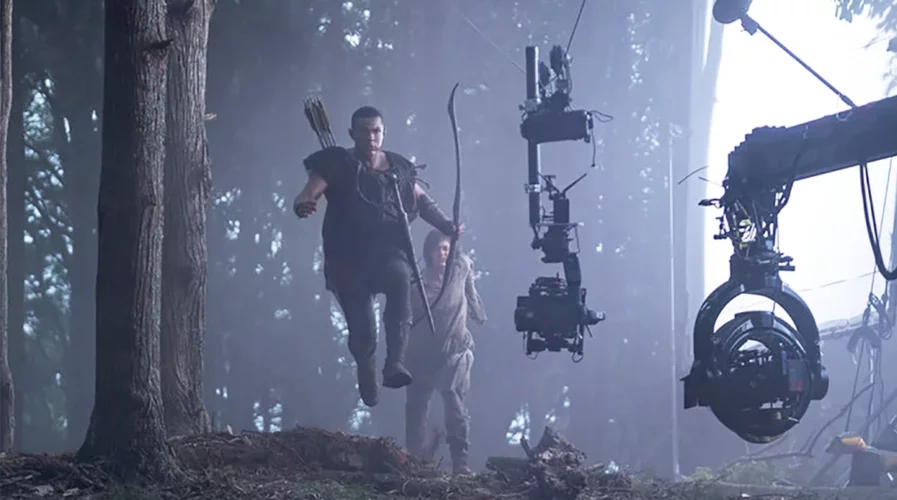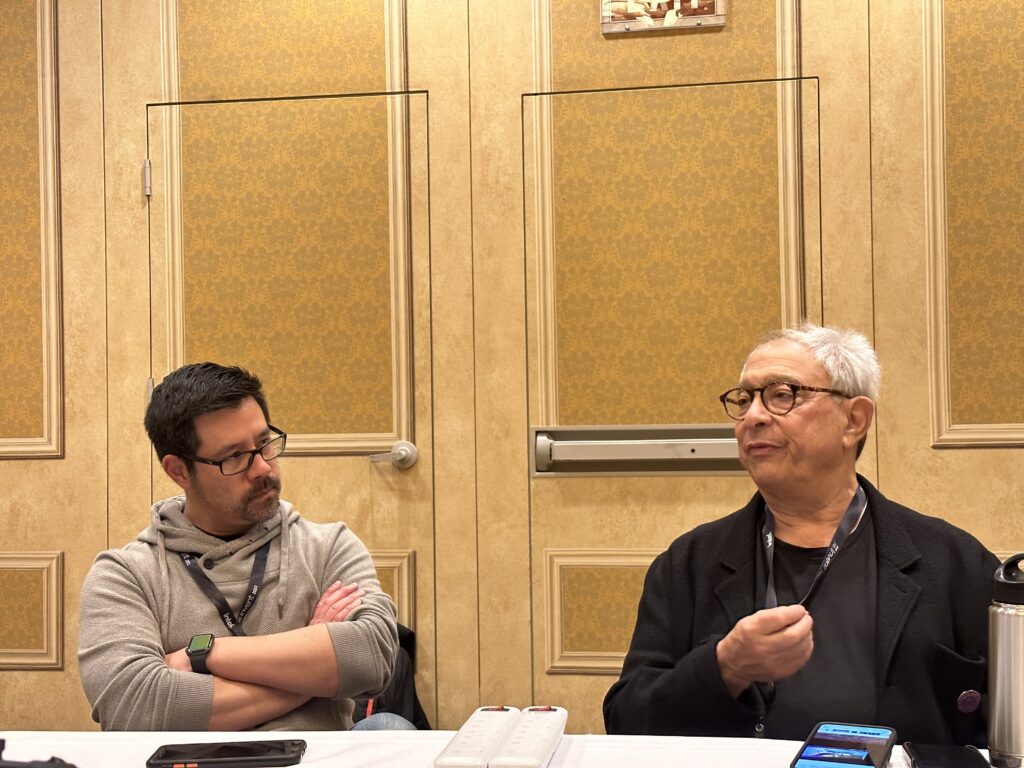
Here’s how the cloud assisted in the completion of LOTR’s The Rings of Power amidst the pandemic.Source: Amazon
Here’s how the cloud assisted in the completion of LOTR’s The Rings of Power amidst the pandemic
- During AWS reInvent earlier this month, a roundtable with the producer of The Rings of Power, Ron Ames, unveiled how the pandemic turned the Lord of the Rings prequel series into a cloud-based production.
- Even as lockdowns around the world eased, Ames said he took the notion of cloud computing to “make the world smaller”.
In 2017, Amazon Originals broke the news that it purchased the global rights to a television adaptation of The Lord of the Rings for a cool US$250 million. Then during Super Bowl LVI, Amazon delivered the first look at its original series on the renewed journey to Middle earth with a teaser trailer. It was a big feat to take on as the Lord of the Rings films, directed by Peter Jackson and adapted from the novels by J. R. R. Tolkien, is no doubt among the most profitable and awarded films of all time.
The series, known as “Lord of the Rings: The Rings of Power”, immediately became the most-watched online trailer in Super Bowl event’s history. The series, set in the Second Age of J.R.R. Tolkien’s Middle Earth timeline, came eight years after the concluding film of The Hobbit and 19 years after the last Lord of the Rings film. Today, we know The Rings of Power as the most expensive series in the TV and streaming history to date — Amazon Prime spent about a billion US dollars on the project.
Frankly, before the world outside the production team knew the name of the series, it was called “Amazon’s US$1 billion Lord of the Rings show.” Today, we know production costs for the first season’s eight episodes alone — all shot in New Zealand under pandemic restrictions — have tacked on a staggering US$465 million.
In justifying the high cost of the first season, Amazon Studios head Jennifer Salke explained they’re “building the infrastructure of what will sustain the whole series.” Once debuted on September 2, what stood out is the fact that the hype did not disappoint, and the numbers speak for themselves. Amazon shared that more than 25 million people around the world sampled the premiere of its highly-anticipated series, making it the biggest debut in the streaming service’s history.
To demonstrate the sheer scale of the project, showrunner J.D. Payne has shared that there are over 9,500 VFX shots in the first season alone
The Rings of Power, powered by cloud in its entirety
Simply put, in this latest adaptation of Tolkien’s work, technology was at the heart of the workflow, and central to that was AWS, the cloud arm of Amazon. During the recently concluded AWS re:Invent 2022, producer Ron Ames discussed how AWS and the cloud helped the production team achieve many of the jaw-dropping visuals seen in the show’s first season.
Much of the production used cloud, from pre-visualization to exhibition interconnected, including camera capture, color pipeline, postproduction, visual effects, and the delivery to Amazon’s platform. “When we started, we went to New Zealand, we shot for three months — all while building our system that we were sharing internationally. Then the pandemic struck in 2020, and we were told on a Thursday that we needed to shut down by Friday,” producer Ron Ames told reporters during a media roundtable.

Ron Ames, The Rings of Power season one Producer & Jesse Kobayashi, VFX Producer at
Amazon Studios
That is when the decision to employ cloud-based production became even more important. “We were told that we had to shut down,” explained Ames. “We took all of our hardware, sent it off to our teams because we couldn’t completely shut down, we would lose our vendors, our staff, all these artists we’d collected around the world. We had to continue the visual effects postproduction because we had already shot an episode. Within a weekend, we started cloud-based production in earnest. We were doing it anyway, but Covid made it a requirement and sent us to the next level of development.”
Even before the pandemic, Ames went with how Tolkien started to create the world of Middle-earth — with a map and made the story fit. “So we started that way as well. We recognised that we were going to have to plan this very carefully.” Basically, their map involved working with AWS on building a cloud-production pipeline. “AWS is creating the future of filmmaking,” Ames told the audience. “The future of filmmaking is cloud-based production.”
In total, the production team worked with 12 global vendors, including British visual effects and animation studios DNEG, American motion picture visual effects company ILM and post-production group Company 3, on the show’s visual effects, creating 9,146 shots. “The price of admission to join us was a willingness to explore new technology, to share assets in a standard way so that every visual effect could be used by a different vendor,” said Ames. “By creating a standard, and everybody knowing they would be working together, we determined that we could actually do this.”
Metadata and the way forward in production
Ames also shared how metadata played a key part of the workflow that had helped the production team throughout the project. He explained that when he started working in the industry, metadata was edge code on negative film, typed script notes, call sheets and production notes. Having worked with AWS meant that the Rings of Power were able to push the boundaries of data forward. “Now, every single frame has every piece of content that went into making that frame from beginning to end,” said Ames.
Concluding his session, Ames said, given the choice, he would not return to the old way of doing things. “I would not — not only because it is not cost effective and efficient, but also because I think there are other issues with it. The one thing that is truly unique is when you are done, and everything is cloud based, it is actually stored and secure and the cloud can also be shared into the future. It is really a fantastic way of working from beginning to the end,” he noted.
READ MORE
- Ethical AI: The renewed importance of safeguarding data and customer privacy in Generative AI applications
- How Japan balances AI-driven opportunities with cybersecurity needs
- Deploying SASE: Benchmarking your approach
- Insurance everywhere all at once: the digital transformation of the APAC insurance industry
- Google parent Alphabet eyes HubSpot: A potential acquisition shaping the future of CRM


